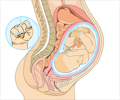New study hints at the potential for developing future therapies by targeting DOT1L activity to treat this new genetic condition.

Rare de novo gain-of-function missense variants in DOT1L are associated with developmental delay and congenital anomalies
Go to source). The study has been conducted by Dr. Hugo J. Bellen, a distinguished service professor at Baylor College of Medicine and a principal investigator at the Jan and Dan Duncan Neurological Research Institute (Duncan NRI) at Texas Children’s Hospital.
‘Dominant human developmental disorders have been linked to partial loss-of-function DOT1L variants in approximately half of the KMT-encoding genes, specifically in 16 out of 34 cases. #neurologicaldisorder #genetics’





“This project originated when the Undiagnosed Diseases Network, SickKids Complex Care Genomics project in Canada headed by Dr. Gregory Costain, and a search of the GeneMatcher database identified nine unrelated individuals with intellectual disability, developmental delays, distinctive facial features, and other overlapping features carried variants in DOT1L gene,” said Dr. Bellen. “We found this intriguing because this gene had not been previously associated with a genetic or neurological disorder.”
Unveiling the Role of DOT1L: An Evolutionarily Conserved Gene in Gene Expression Regulation
DOT1L is an evolutionarily conserved gene found in a broad range of species from yeast to man. It encodes an enzyme - lysine methyltransferase (KMT) – that adds methyl groups to a specific amino acid (lysine 79 aka K79) present on a particular histone (H3). Methylation of specific lysine residues within histones acts as a switch to turn ‘on’ or ‘off’ the expression of target genes.“We found the variants in DOT1L cause a dominant disorder through a gain-of-function mechanism, which is different from other KMTs,” said Dr. Bellen.
Although DOT1L is involved in several fundamental cellular processes, and its misregulation has been implicated in cancer, prior to this study it was not clear how variants in the DOT1L gene cause a congenital disorder. So, Dr. Zelha Nil, the first author and postdoctoral associate in the Bellen lab, turned to fruit flies to address that question.
DOT1L and its fruit fly version, grappa (gpp) have similar protein sequences and are also likely to have overlapping functions. Most disease-causing human variants in DOT1L are located in its enzymatic domain. Furthermore, gpp is expressed in a large subset of neurons and some glial cells. The team generated a fly gpp mutant, which grew slowly and died in larval stages. Using these mutant flies and flies in which gpp RNA was knocked down, they found compelling evidence that gpp is essential for the survival of the flies and required for proper development as well as the development and function of the fly nervous system, and for H3K79 methylation.
“We attempted to suppress the lethality of gpp mutant flies by expressing the human DOT1L gene in flies,” Dr. Zelha Nil said. “To our surprise, expressing normal or variant versions of the human DOT1L gene in tissues where it occurs naturally in flies was not sufficient for gpp mutants who had lost both copies of the gene to survive. Surprisingly, flies with a partial loss of gpp that expressed the human DOT1L variants were less viable and had more profound morphological defects than the normal DOT1L expressing flies, suggesting the human DOT1L expression in flies was toxic.” Consistent with this observation, gpp mutant flies and cultured cells expressing variant versions of human DOT1L exhibited significantly higher levels of H3K79 methylation than normal DOT1L, suggesting that elevated levels of methylation are the likely molecular cause of the symptoms seen in the patients.
Advertisement
Reference:
- Rare de novo gain-of-function missense variants in DOT1L are associated with developmental delay and congenital anomalies - (https://www.cell.com/ajhg/fulltext/S0002-9297(23)00322-1)
Source-Eurekalert














